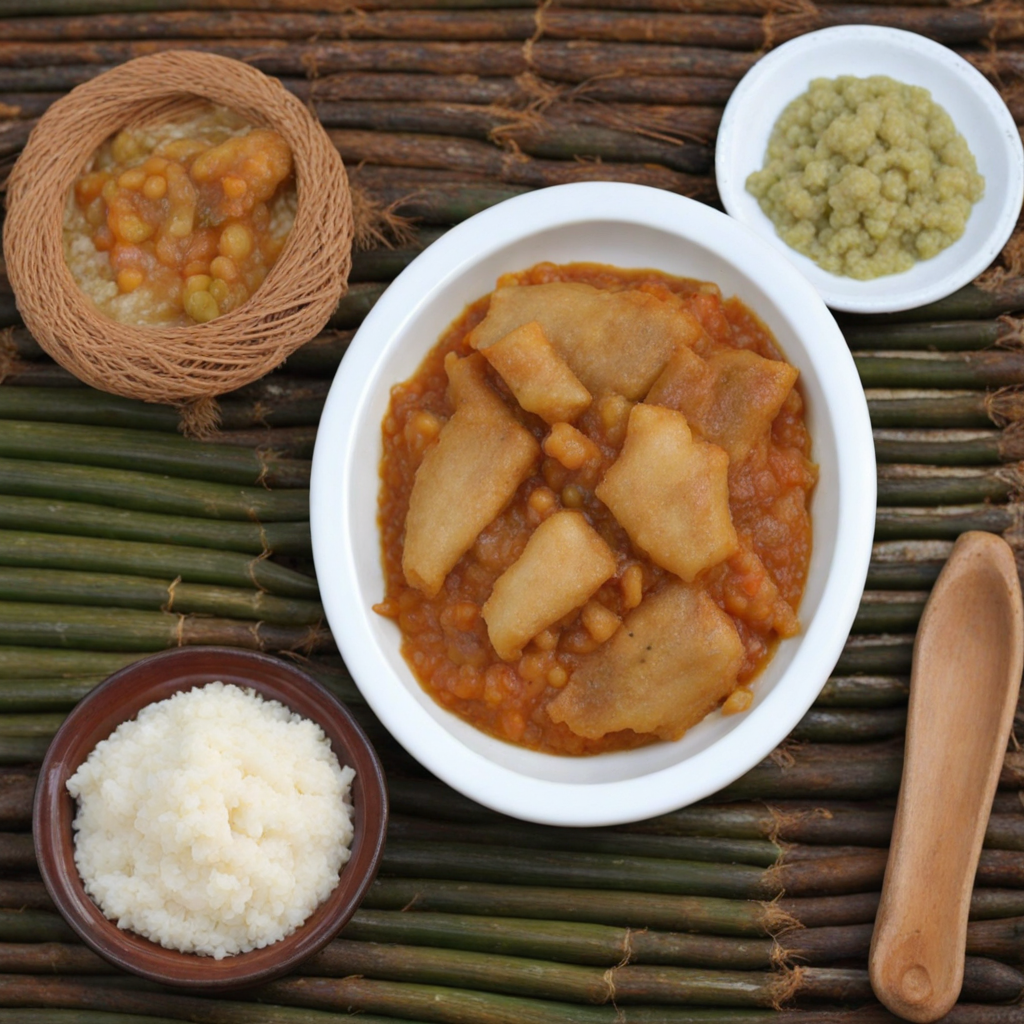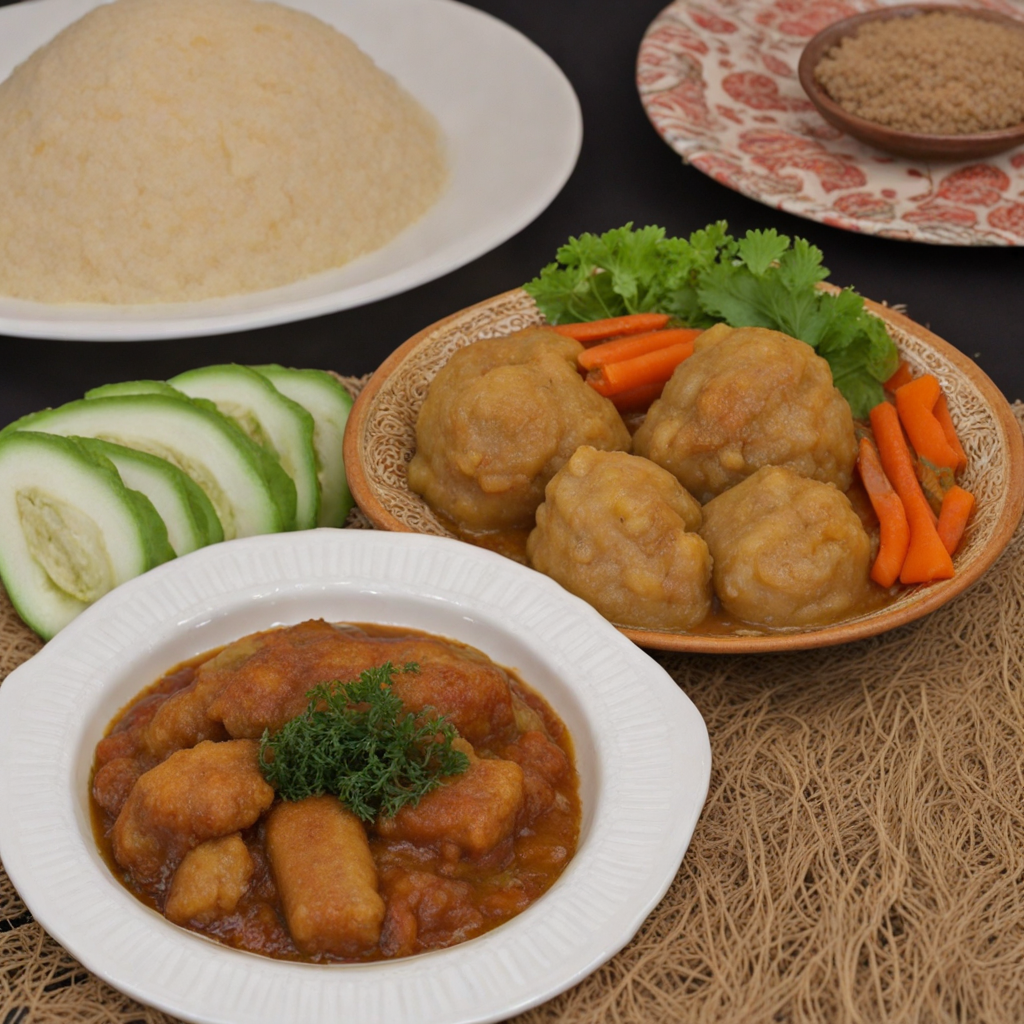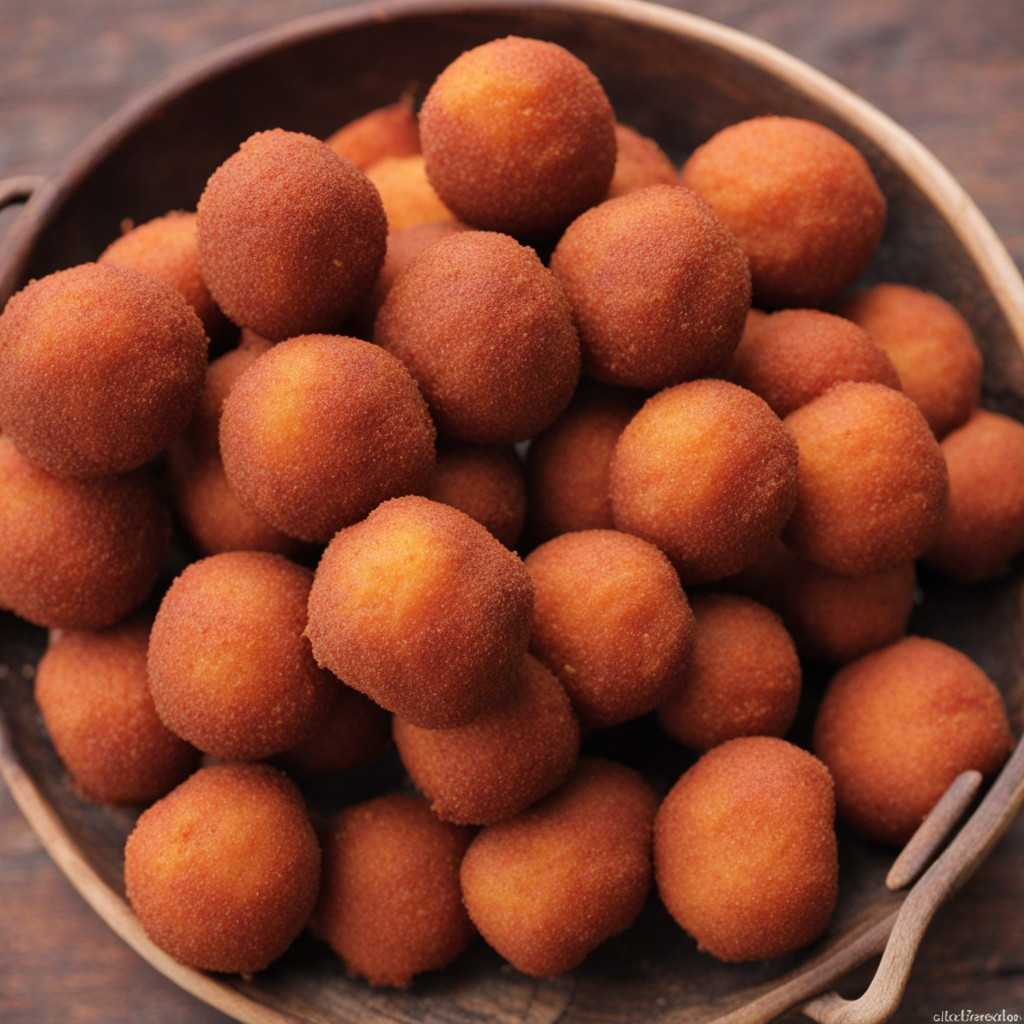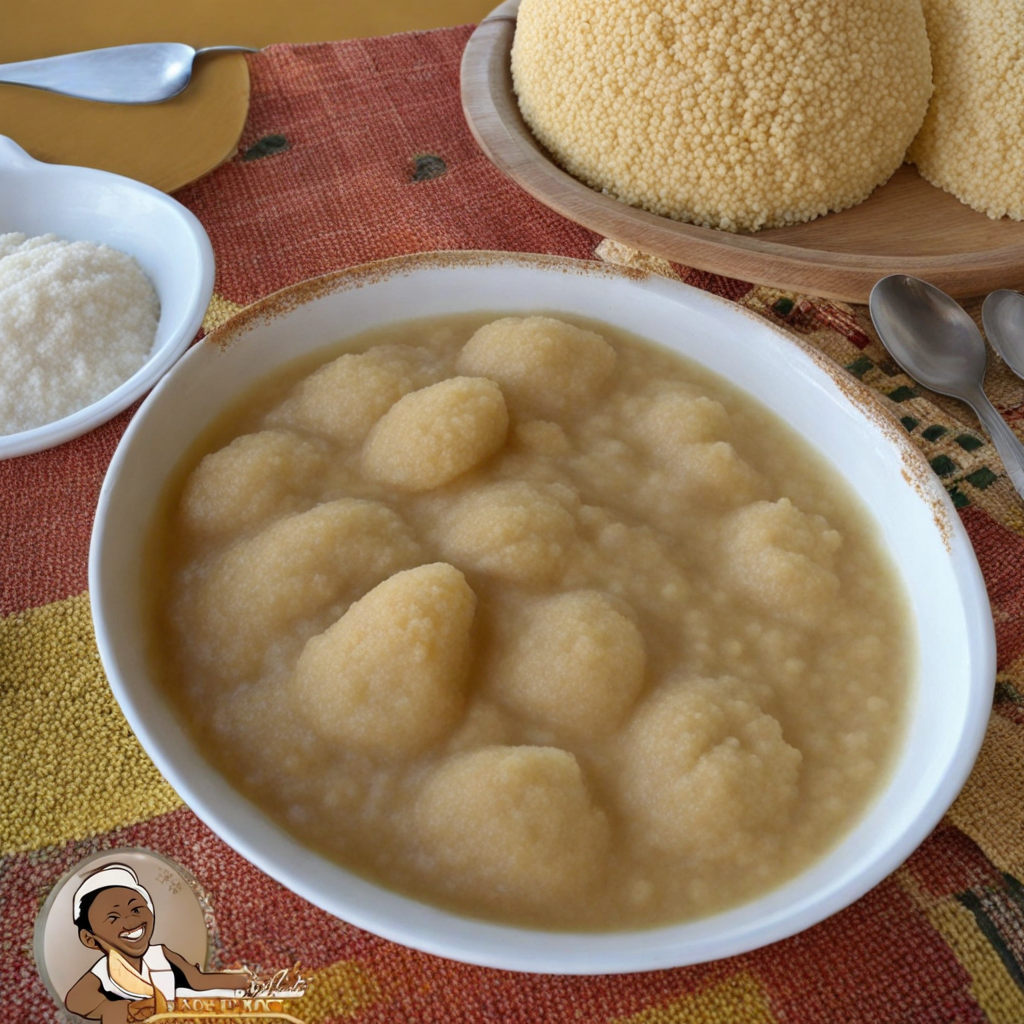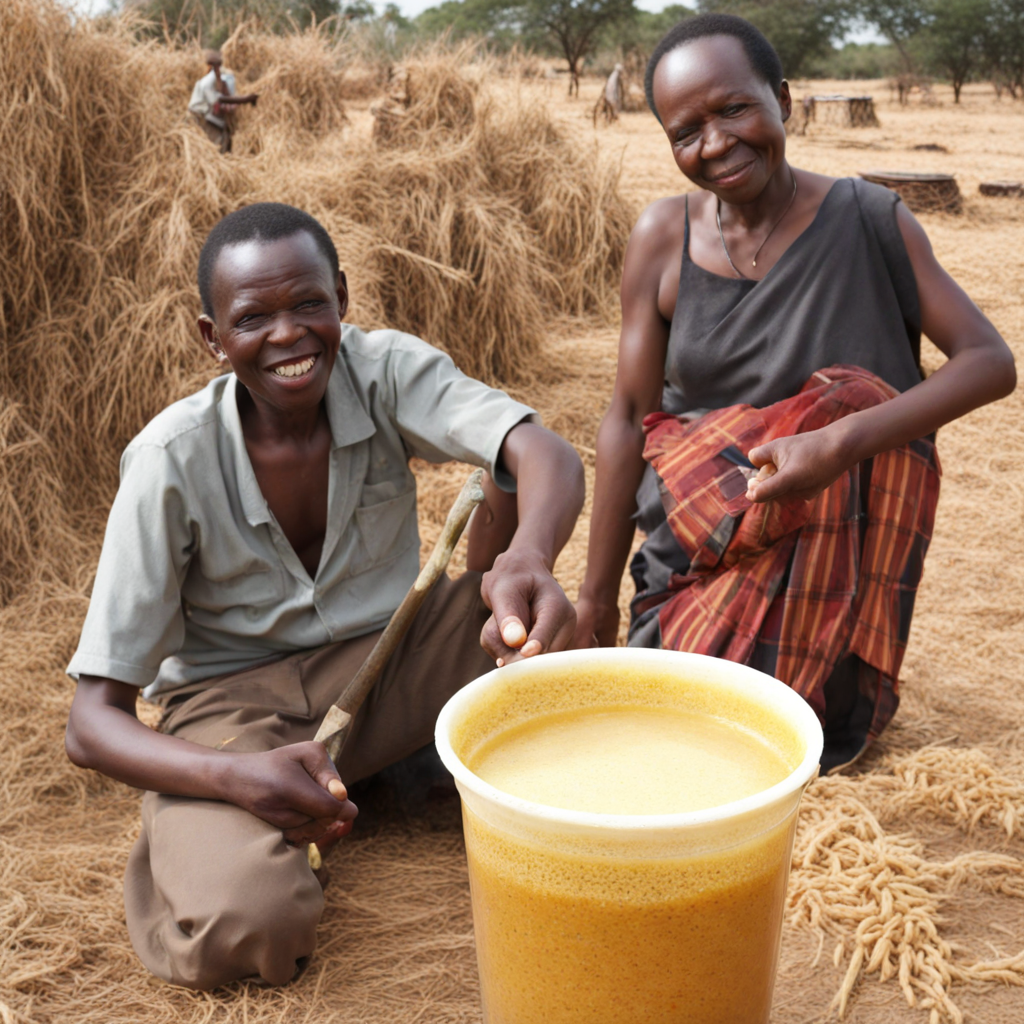Bwali
Bwali is a traditional Zambian dish that offers a unique and hearty taste experience, deeply rooted in the country’s culinary heritage. At its core, Bwali is a thick porridge made from ground cassava or maize, often enjoyed as a staple food. The texture is smooth yet dense, providing a comforting base for a variety of accompaniments. Its neutral flavor profile allows it to absorb the spices and flavors of the dishes it is served with, making it a versatile canvas for culinary creativity. Typically, Bwali is served with a range of flavorful sides, such as relishes made from vegetables, beans, or meat stews. The combination of Bwali with these accompaniments creates a wholesome meal that is both filling and nutritious. The use of local ingredients, such as leafy greens and spicy sauces, enhances the dish, bringing a delightful contrast to the subtle taste of the porridge. The preparation of Bwali often involves communal cooking, making it a dish that fosters social connections and shared experiences. As you explore Bwali, you will discover the importance of texture and flavor balance in Zambian cuisine. The dish is not just about sustenance; it’s a celebration of local produce and traditional cooking methods. The satisfaction of dipping a piece of Bwali into a spicy relish or savoring it alongside a rich meat stew is an experience that encapsulates the heart of Zambian hospitality. For anyone seeking to broaden their palate, Bwali offers an authentic taste of Zambia that is both comforting and inviting.
How It Became This Dish
The Culinary Journey of Bwali: A Zambian Staple #### Origins and Ingredients Bwali, a staple food in Zambia, is more than just a dish; it is a cultural emblem that reflects the agricultural heritage and culinary practices of the Zambian people. This dish, primarily made from maize flour, has its roots deeply embedded in the daily lives of Zambians, particularly among the Bemba, Tonga, and other ethnic groups. Maize, introduced to the region during the colonial era from the Americas, quickly became a staple crop due to its adaptability to various climates and soils within Zambia. The preparation of Bwali involves mixing maize flour with water to create a thick porridge-like consistency. The mixture is then stirred over heat until it reaches a firm, doughy texture. Traditionally, this food was prepared using a wooden stirrer known as a "nsima" or "impwa," which is essential for achieving the perfect consistency. The dish is often served in large communal bowls, fostering a sense of community and shared experience. #### Cultural Significance In Zambian culture, Bwali is more than sustenance; it is a symbol of identity and unity. It is traditionally consumed with a variety of accompaniments, such as vegetable relish, meat stews, or fish, which enhance its flavor and nutritional value. The dish is often central to social gatherings, celebrations, and rituals, making it a staple in both everyday life and important ceremonies. The communal aspect of eating Bwali cannot be overstated. During family gatherings or community events, sharing Bwali signifies togetherness and hospitality. It is customary for Zambians to offer food to guests as a mark of respect and warmth. In many rural areas, the preparation of Bwali is a collective effort, involving multiple family members or neighbors, thus reinforcing social bonds. #### Evolution Over Time Historically, Bwali has evolved alongside the socio-economic changes in Zambia. In pre-colonial times, the dish was primarily made from indigenous grains such as millet and sorghum. However, the introduction of maize during the colonial period transformed Bwali into the dish we recognize today. The adaptability of maize allowed it to thrive in various regions, leading to its dominance in Zambian agriculture and cuisine. As Zambia underwent various political and economic transformations post-independence in 1964, so did the dietary habits of its people. Urbanization led to changes in food preparation and consumption patterns. While traditional methods of cooking Bwali remain prevalent, the rise of convenience foods and fast-paced lifestyles have influenced how it is prepared and served. Instant maize flour has become widely available, allowing for quicker meal preparation without sacrificing the essence of Bwali. #### Nutritional Aspects Bwali is not only a cultural cornerstone but also a nutritionally significant part of the Zambian diet. Maize is a rich source of carbohydrates, providing energy for the physically demanding lifestyles of many Zambians. When paired with vegetable relishes, beans, or meat, Bwali offers a balanced meal that supplies essential nutrients. The dish is particularly important in rural areas where agriculture is the backbone of the economy, ensuring that families can sustain themselves through their own farming practices. #### Regional Variations Across Zambia, Bwali is prepared and enjoyed in various forms, reflecting the diverse culinary practices of different ethnic groups. In the Northern Province, for instance, Bwali may be served with a spicy fish stew, while in the Southern Province, it might accompany a rich tomato and vegetable sauce. Each region has its unique twist on the dish, incorporating local ingredients and flavors that showcase the rich biodiversity of Zambia. In addition to regional variations, the preparation of Bwali is also influenced by seasonal changes. During the harvest season, the dish may be complemented with fresh, locally grown vegetables, while in the dry season, dried or preserved foods become more common. This adaptability underscores the resilience of Zambian culinary practices. #### Modern-Day Relevance In contemporary Zambia, Bwali remains a beloved staple, reflecting both tradition and modernity. As the country continues to develop, there is a renewed interest in traditional foods, with Bwali being celebrated as a source of national pride. Local chefs and food enthusiasts are experimenting with Bwali, incorporating it into gourmet dishes that appeal to younger generations while still honoring its roots. The growing trend of promoting local cuisine and sustainable food practices has also led to increased awareness of the importance of Bwali in Zambian culture. Organizations and initiatives aimed at preserving traditional cooking methods and promoting local ingredients have emerged, further embedding Bwali into the national consciousness. #### Conclusion Bwali is more than just a dish; it is a narrative of Zambia's history, culture, and identity. From its humble beginnings rooted in indigenous agricultural practices to its evolution in the face of colonial influences and modern challenges, Bwali encapsulates the resilience and adaptability of Zambian cuisine. Its significance as a communal dish fosters connections among families and communities, making it a vital part of social and cultural life. As Zambia continues to carve its path in a globalized world, Bwali stands as a testament to the enduring power of food to unite people, celebrate heritage, and nourish the body and spirit. It is a culinary symbol of Zambian pride that will likely continue to evolve while remaining grounded in tradition for generations to come.
You may like
Discover local flavors from Zambia


